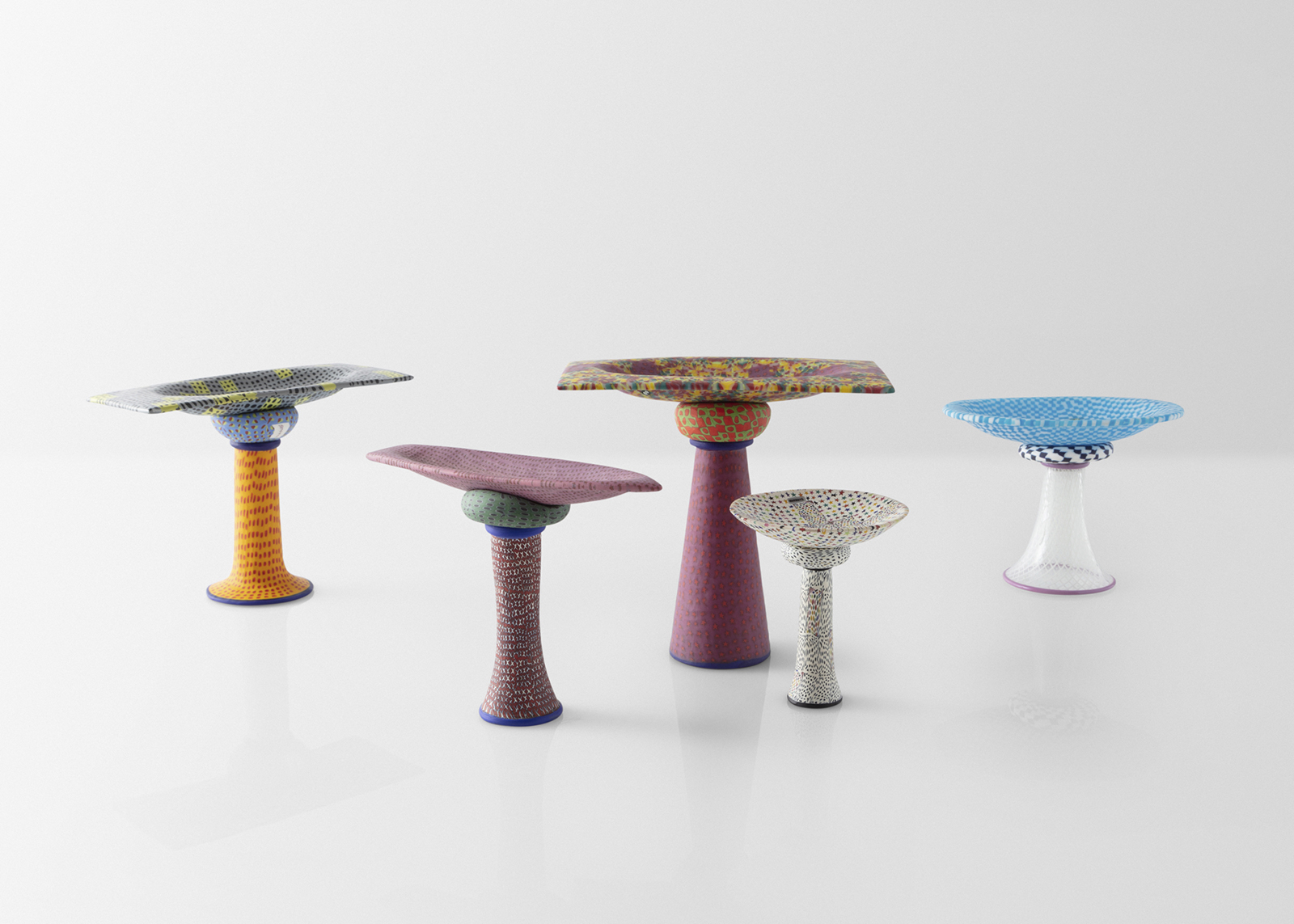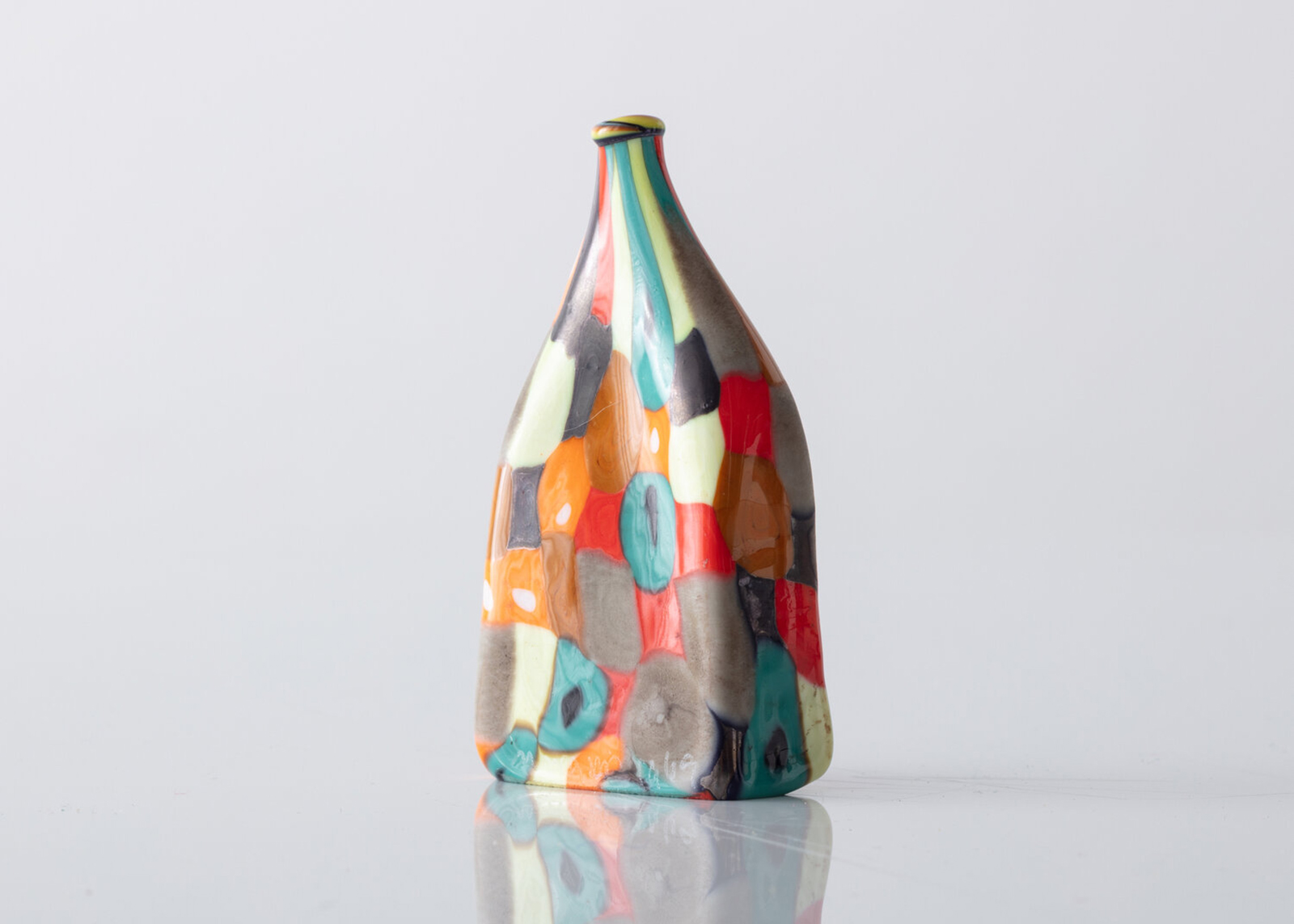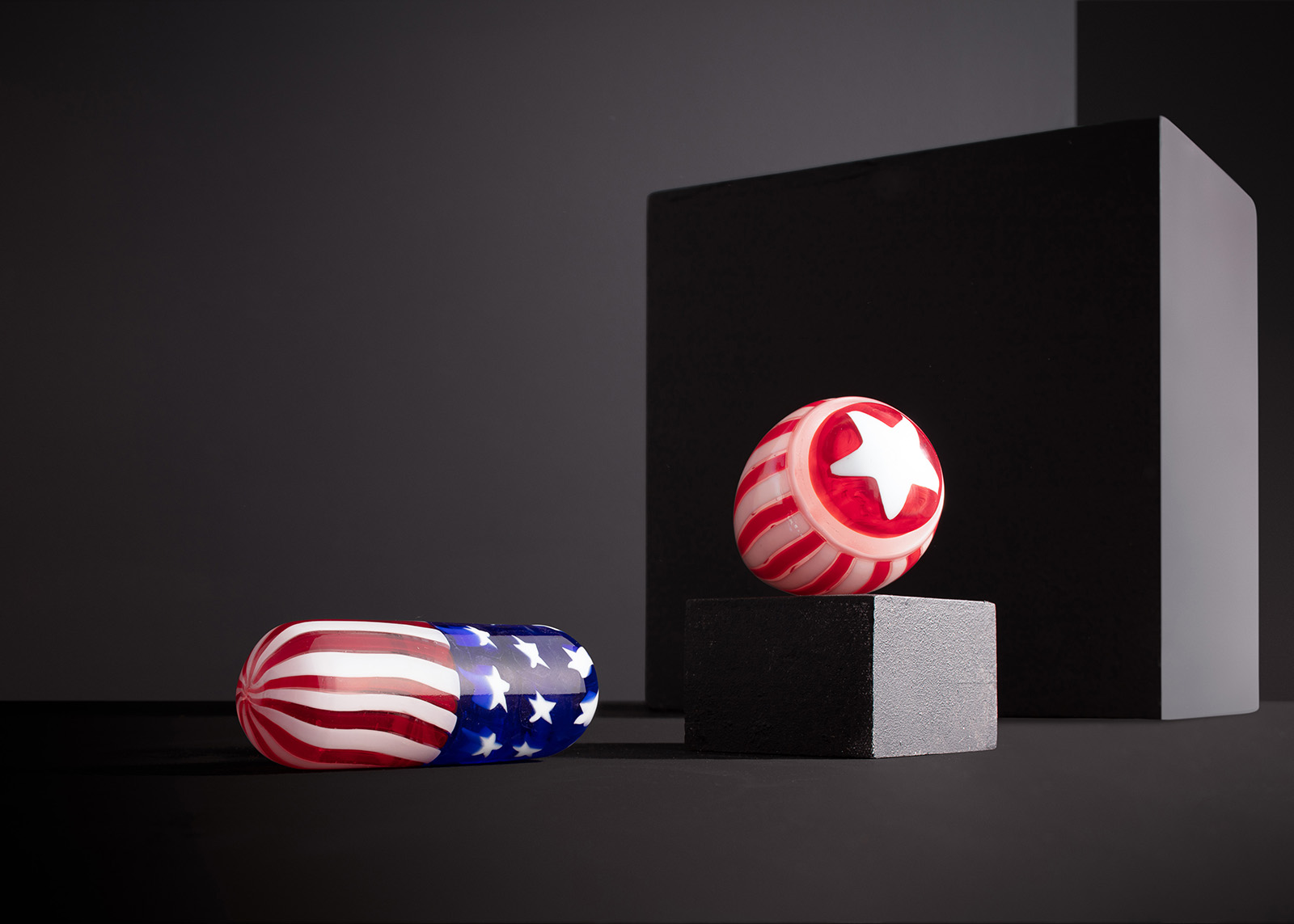Richard Marquis
A biography
For nearly 60 years, pioneering artist Richard Marquis (b. 1945) has been on a journey of experimentation with form and pattern, as well as pop culture, kitsch, and humor. His work may take from a day to months to create—employing unparalleled levels of technical skill and attention to detail—yet, for Marquis, it is always about the end result and not just the process. A student and eventual peer of form-breaking artists Peter Voulkos and Ron Nagle, Marquis began as a ceramicist and transitioned to glass-making in the late 1960s. In 1969, he was awarded a Fulbright scholarship to support his work and secured a position at the Venini Factory in Murano, becoming the first American to be permitted to blow glass in the workshop. There he learned the traditional Venetian techniques, such as the creation and use of caning and murrine and millefiori—colored glass patterns and endlessly repeating flowers, respectively. Marquis also met Carlos Scarpa there, who would go on to greatly influence his work.
Marquis’ exposure to traditional glass blowing techniques at Venini forever changed the trajectory of glassmaking, in the U.S. and internationally. Marquis brought these techniques back to the U.S. and taught them to his students, who in turn incorporated them and expanded their use in the U.S. and around the world. At the same time, Marquis himself went on to upend the traditional application of many of these complex techniques by inserting different narratives and pop culture references into his objects.
Central to Marquis’ body of work is an attention to small detail and an appreciation for the impact that scale and proportion can have—whether an item is large or small. Equally important to Marquis is that each work communicates a concept or narrative to the viewer, seeing the glass as both a canvas for ideas, as well as an artistic medium. For example, his Acid Capsule, 1969-1970 (in the collections of The Metropolitan Museum of Art and the Corning Museum of Glass) is a small red, white, and blue glass pill made from shards of glass found on the floor at Venini. The work makes references to Americana that would have resonated with any viewer in this period, making the work a smart and playful social critique.
Richard Marquis’ work can be found in institutions across the globe including the Los Angeles County Museum of Art, Los Angeles, CA; the New Orleans Museum of Art, New Orleans LA; the Metropolitan Museum of Art and Museum of Arts & Design, New York, NY; the Smithsonian American Art Museum, Washington DC; Victoria and Albert Museum, London, England; New Glass Museum, Tsukuba, Japan; and the Musée des Arts Décoratifs, Lausanne, Switzerland, to name a few.
He currently lives and works in Puget Sound, Washington.


